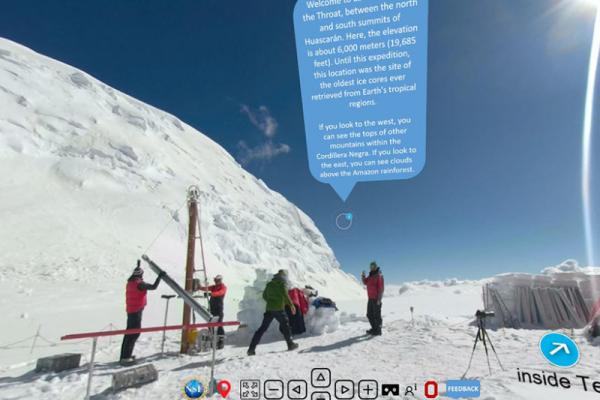July 9, 2021
Virtual Tours Through the Ice Using Everyday Tools

This screen capture is from Byrd Polar and Climate Research Center’s Virtual Ice Explorer tour called “Huascarán, Yungay, Peru,” showing scientists at work on the 2019 Ice Core Paleoclimatology expedition to Mount Huascarán. Credit: Byrd Polar and Climate Research Center.
